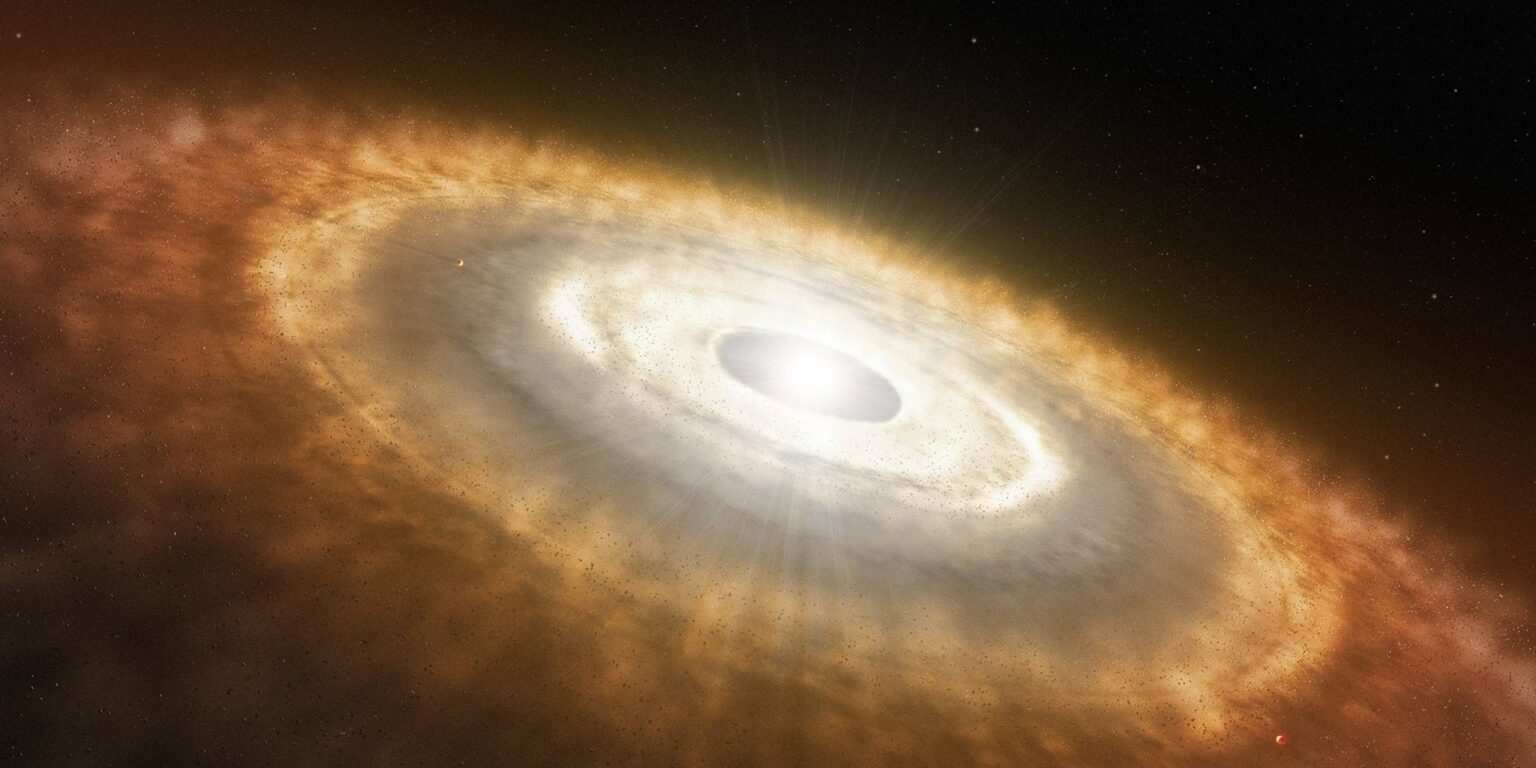Scientists are observing the amazing variable star V1741 Sagittarius. They have established that it is a huge young luminary. This is not the first time that an outburst has occurred in the accretion disk that surrounds it.

Amazing variable star
Scientists have been observing the star V1741 Sagittarius for quite a long time, which sometimes greatly increases its brightness as if powerful outbursts are taking place on it. A new study has revealed their nature and linked them to the fact that this luminary is very young.
The results of the observations, published on January 17 on the arXiv preprint server, shed more light on the nature of the star V1741 Sagittarius (other designations: SPICY 71482 and Gaia22dtk). It was first reported as a variable in 1957, but its luminosity remained stable for many years after that. Its new outburst was recorded in mid-2022 using the ESA’s Gaia satellite.
This is a classic T Tauri variable star located near the young star cluster NGC 6530, called the Lagoon Nebula. These stars are very young supergiants. They are surrounded by accretion disks, where dynamic events occur. From time to time, outbursts occur there, which astronomers see as a variation in brightness.
Astronomers usually divide such events into EX Lup outbursts (also known as EXors) and FU Ori outbursts (or FUors). The first has an amplitude of several stellar magnitudes and lasts from several months to one or two years. The latter are more extreme and rare, can have an amplitude of up to 5–6 stellar magnitudes, and last from decades to even centuries.
Outburst of V1741 Sagittarius
A team of astronomers led by Michael A. Kuhn from the University of Hertfordshire, UK, conducted photometry and spectroscopy of V1741 Cnhskmwz using instruments such as Gaia and NASA’s Infrared Telescope (IRTF). The main purpose of their research was to study the observed outburst in the hope of determining the true nature of V1741 Sagittarius.
The study showed that the outburst of V1741 Sagittarius was an EX Lup-type event of moderate amplitude — about 3.0 magnitude in the optical and 1-2 magnitude in the infrared ranges. According to the researchers, the most noticeable change in the star’s spectrum was the appearance and subsequent disappearance of the absorption of titanium oxide (TiO) while it continued to fade. This could be due to the cooling of the circumstellar gas.
The collected data allowed astronomers to determine the fundamental properties of V1741 Sagittarius. It turns out that the star belongs to the spectral type K2, is less than 3 million years old, and is located at a distance of about 4,100 light-years. The results indicate that it formed on the outskirts of the Lagoon Nebula, near the subcluster designated G5.9-0.9, and not the main cluster.
According to phys.org
Follow us on Twitter to get the most interesting space news in time
https://twitter.com/ust_magazin


